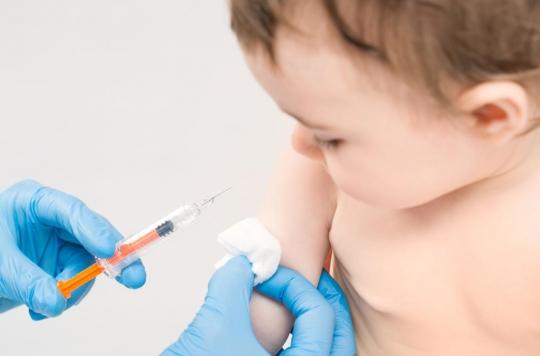In a report unveiled this Friday, the Medicines Agency (ANSM) concludes that the passage from 3 to 11 compulsory vaccines in children under 2 years of age has not led to an increase in adverse effects, nor the appearance of new unlisted effects.

A year and a half after the passage from three to eleven compulsory vaccines for children under two years of age, the National Medicines Agency (ANSM) draws up a report which is intended to be “reassuring”.
In a report made public this Friday, June 28, the health agency believes that “no new safety signal has been highlighted” after the extension of the vaccine to babies, which conforms to the “safety of use of vaccines” .
An exercise in transparency to reassure
This report, which lists the “adverse events” linked to the vaccination of babies since 2012, i.e. before and after the extension of the vaccine, was designed as an exercise in transparency intended to reassure “those who were wondering”, to know health professionals and parents.
Indeed, the change from 8 recommended vaccines to mandatory (haemophilus influenzae B, whooping cough, hepatitis B, measles, mumps, rubella, meningococcus C and pneumococcus) had raised serious concerns, particularly with regard to the risk of adverse effects.
“We wanted to see if there was a pharmacovigilance signal that could emerge from this report: new adverse effects that were not known” or whose frequency was increasing, or “a higher number of declarations” in general, explains Alban Dhanani, deputy director of the ANSM division responsible in particular for vaccines.
The result is reassuring since no increase in adverse effects or appearance of new unlisted effects was noted by the ANSM after the transition to 11 compulsory vaccines.
962 adverse effects, half of which were listed as “serious”
This new report was produced in two stages, first by taking stock of the 2012-2017 period, then by focusing on the first six months of 2018, after the vaccination extension.
During this first period, 962 adverse effects were recorded, an average of 160 per year “for nearly 38 million doses of vaccines administered”. According to the ANSM, an adverse event is qualified as “any harmful and unsought manifestation occurring in a vaccinated infant, without prejudging a causal link”. Is qualified as an adverse reaction when there is a “suspected” link with the vaccine”.
Half of these declarations were classified as “serious”, because generally requiring hospitalization. The most frequently reported cases were fevers, skin disorders, convulsions and episodes of hypotonia (decreased muscle tone).
“Over the whole period, 23 deaths were notified, of which almost half occurred in children suffering from a serious history or severe conditions that could explain the fatal outcome”, details the ANSM.
On the other hand, during the first six months of 2018, 75 declarations were made, 42 of which were serious. The health agency specifies that the total number of vaccines over this period is not yet known and that these data are therefore provisional.
.















